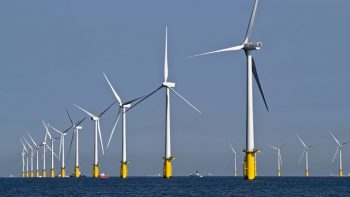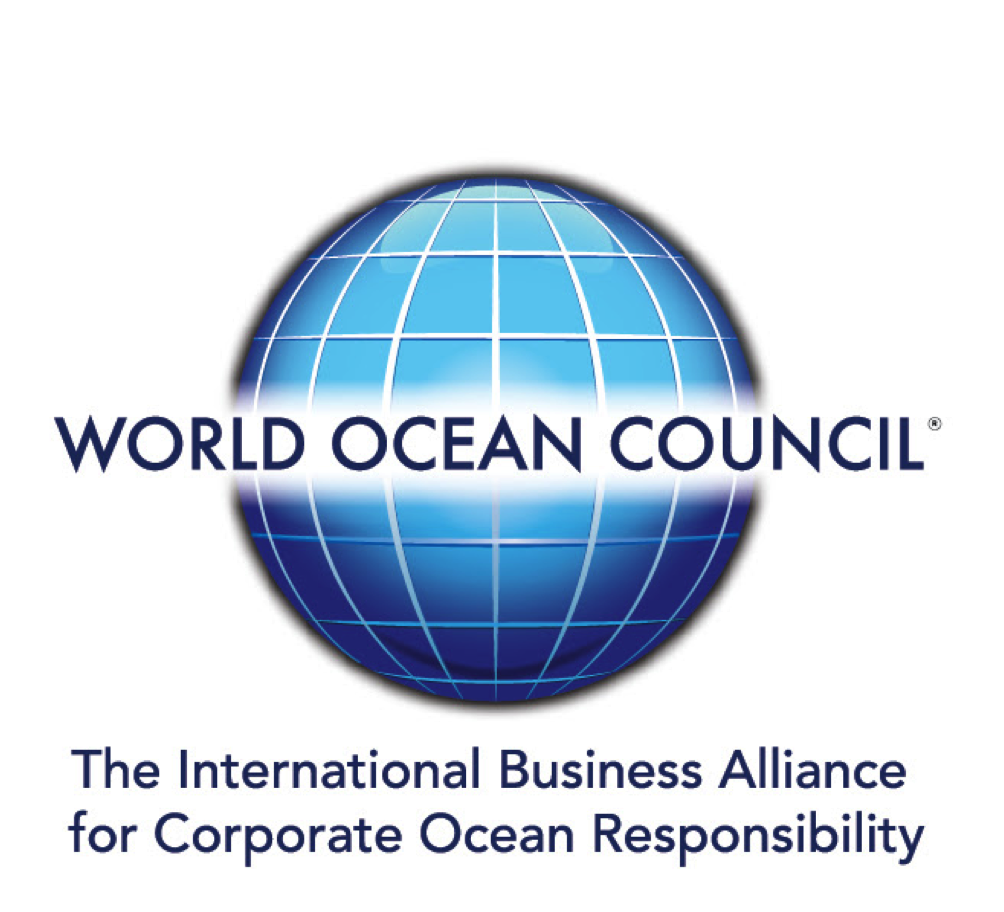Paul Holthus, CEO of World Ocean Council, was recently interviewed in advance of his particiaption in the 4th Transition Forum. The forum, which brings together the public and private sector around efforts to speed the global transition to a low-carbon future, took place September 30 and October 1.
Read the interview below, conducted by energy and environment journalist Hélène Bouillon-Duparc.
A key challenge is to understand and optimize the ocean’s enormous potential to produce low carbon energy and sequester atmospheric carbon.
1. What are the main challenges oceans have to tackle today ?

The global ocean, covering 71 % of the planet, is in trouble around the world. Studies show that almost no part of the global ocean is unaffected by human impacts. Marine ecosystems are being degraded, destroyed and overexploited at an ever-increasing rate and global scale. This is affecting the coastal inhabitants and communities worldwide that depend on marine areas for food and livelihood, many of whom are poor and marginalised. Degradation of the natural functions of the ocean may also affect its critical role in regulating the climate.
The ocean is also a source of solutions to our immediate climate change challenges of producing low-carbon energy and sequestering carbon. The ocean is a global, interconnected ecosystem that is closely intertwined with our planet’s climate system. For example, ocean phytoplankton produce more than 50% of our oxygen and the ocean absorbs more than 25 % of the anthropogenic CO2 and 90% of the excess heat emitted annually into the atmosphere. We can and must look beyond our current horizon to see the ocean as a source of solutions to the climate change challenges facing our planet.
Tidal and wave energy are poised to provide the most significant contribution in the short-to-medium term.
2. How can the different stakeholders concerned help to really improve ocean sustainability ?
Offshore wind is proving itself as the energy source for changing electricity’s carbon footprint at scale and in time. Ocean winds blow harder, smoother and steadier than land-based wind, providing higher potential for electricity generation. Globally, the offshore wind energy sector had nearly 170 projects by 2020. Projections indicate expected global new-capacity additions to move beyond the 4,000 MW new offshore wind installed per year in the past decade. The European offshore wind industry is more than 20 years old and has grown from less than 3,000 MW in 2010 to a cumulative installed base of more than 25,000 MW by 2021, and new markets in the US and Asia are coming on strong. The EU has a target of 150 GW of offshore wind power capacity by 2030. Investing in what it takes to advance offshore wind rapidly and at scale is clearly a global ocean priority.
Meanwhile, below the surface, the world’s ocean waves, currents, tides and temperature gradients are estimated to potentially provide 20,000 TWh (terawatts-hour) of electricity per year – more than the entire current global generation capacity. Many devices are being tested, but the engineering challenges for technology to survive for long periods in the harsh marine environment present challenges. Tidal and wave energy are those poised to provide the most significant contribution in the short-to-medium term. Some of the greatest potential and need for ocean energy is in the Northeast Atlantic, with Europe hosting most of global developers (52% of tidal stream and 60% of wave energy developers). Ocean energy is a major strand in the long-term tapestry of low carbon energy, but much needs to be done to bring these sources to the energy pipeline.
All the while, CO2 levels have continued to rise. The Paris Agreement requires negative emission technologies (NETs) to remove CO2 from the atmosphere to a safe and environmentally sound storage in order to meet planetary safe limits. Although there is much attention to potential land based NETs, evidence that the ocean is the dominant player in global carbon cycling and storage means that ocean-based NETs must be given serious consideration for the great three-dimensional mass of the global ocean as a formidable opportunity to capture CO2 in the service of humanity’s ever more urgent carbon mitigation gap. The ocean and its ecosystems already capture nearly a quarter of human-produced CO2. Some of this carbon is picked by organisms through photosynthesis and later stored in sediments. Figuring out how to maintain and enhance the ocean’s ability to appropriately absorb carbon from the atmosphere is one of the most pressing immediate climate change science and policy challenges.
Close to shore, healthy mangrove forests, tidal marshes, and seagrass meadows can play a significant role in sequestering atmospheric CO2 as “Blue Carbon.” These ecosystems are also critical habitat for ensuring coastal resilience to extreme events, creating an important “win-win” opportunity waiting to be harnessed. Unfortunately, approximately 1.5% of global Blue Carbon ecosystems are destroyed each year, meaning the services of these Blue Carbon ecosystems are lost and they can become a significant source of greenhouse gas emissions, as locked up carbon is suddenly released. Maintaining or restoring Blue Carbon ecosystems is a simple and effective method for combatting climate change and creating opportunities for carbon offset credits and investment in both carbon sequestration and coastal resilience.
Major efforts are needed to rapidly, but carefully, evaluate Ocean NETs (Negative Emmissions Technologies).
Chemical and biological Ocean NETs are being explored, including: ocean alkalinity shifts (introducing bicarbonates), direct CO2 injection (seabed and water column), growing seaweed for deep ocean deposition, and adjusting ocean primary productivity (e.g. artificial upwelling, addition of macronutrients nitrogen and/or phosphorus, addition of trace elements such as iron and silicon, enhanced light penetration, promoting the growth of nitrogen fixing cyanobacteria).
Major efforts are needed to rapidly, but carefully, evaluate Ocean NETs, e.g., determining the status and impact of potential Ocean NETs; identifying research gaps and unknowns; reviewing the cost of implementation; reviewing the legal framework; exploring the conceptual design of a future multipurpose Ocean NET station for capturing CO2, producing food, generating power, and hosting with other ocean uses.
The World Ocean Council (WOC) is bringing together science, policy, business and other interests to enhance coordination and exchange among the researchers, private enterprises and public bodies to help the world find Ocean NET solutions.
3. What can we expect from events such as the One Ocean Summit that French President Macron recently called for ?
The One Ocean Summit that President Macron recently called for will provide an important opportunity to bring together all of the ocean stakeholders to further identify and agree on the global steps needed to address the key challenges facing the ocean. The ocean business and investment community are key to addressing ocean challenges, and the World Ocean Council, as the unique Global Blue Economy Business and Investment Organization, will be working with the French government to ensure the active participation of the private sector in the One Ocean Summit.

During the Transition Forum, Mr. Holthus gave a plenary presentation on the challenges and opportunities in the ocean’s global confluence of energy, climate and biodiversity. View the recording here (French)

